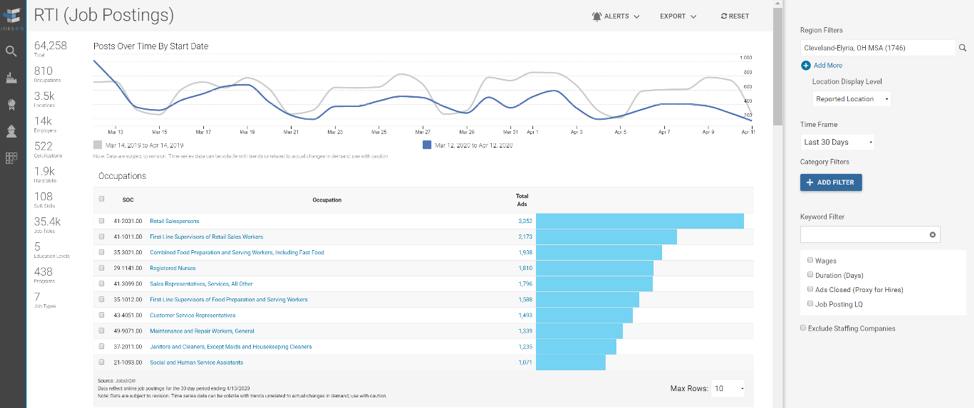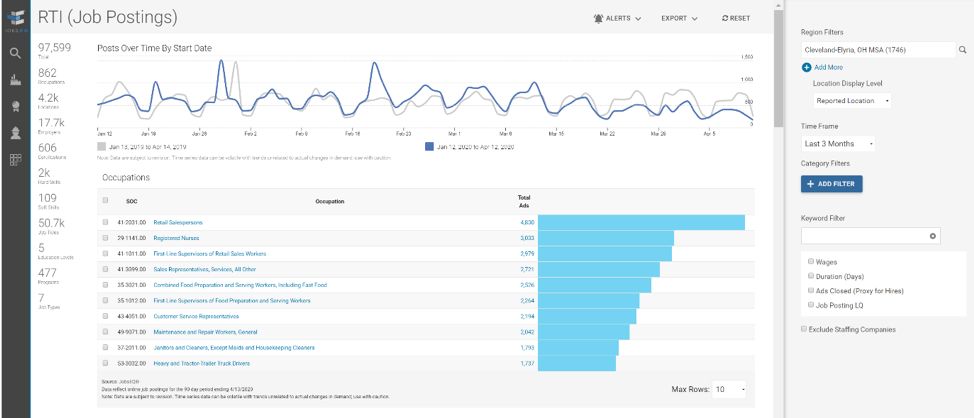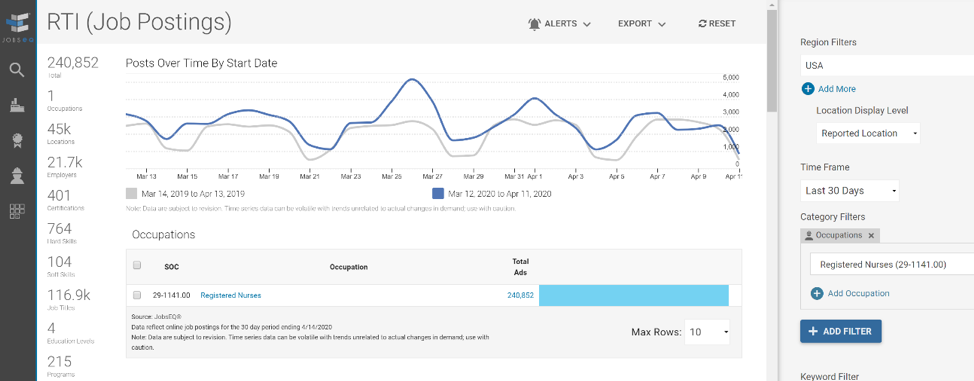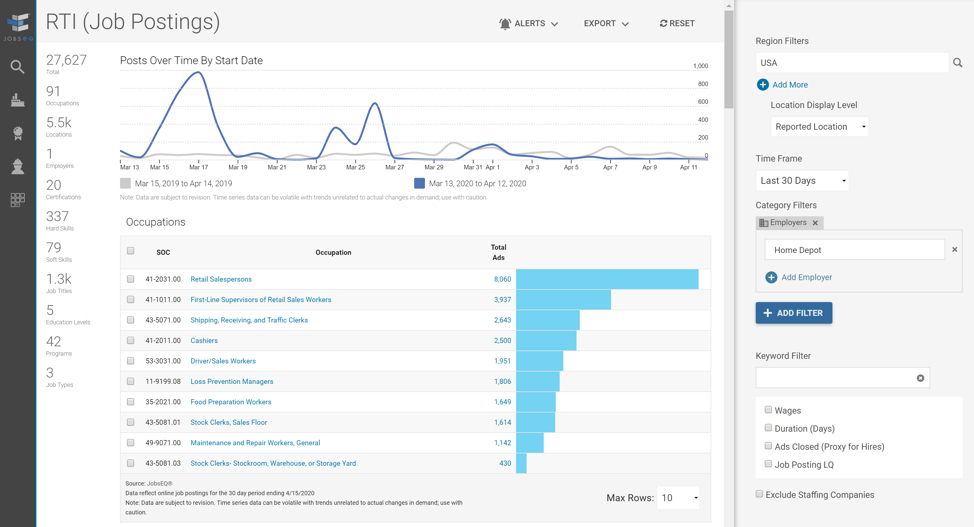Introducing Job Postings Time Series (RTI)

By Former Chmura Staff |
Since the outbreak of the COVID-19 pandemic, local labor markets across the United States have been shocked. Employer demand – measured by online job posting activity – has declined dramatically in most places. Some businesses have closed or reduced services, millions of workers have been laid off, and companies have suddenly put a “hold” on hiring new workers. At the same time, certain occupations – like registered nurses – have seen demand spikes nationwide.
Many of us are wondering how hiring activity right now compares to historical trends. For example, how different is activity over the past month from the same period one year ago? Has hiring bottomed out? Has activity begun to pick up again? If not, then when, and how will we know?
JobsEQ’s latest enhancement to its RTI (Job Postings) analytic puts the answers to questions like these right at your fingertips. No more having to export and save your local job postings data to perform manual calculations to determine how conditions have changed. Instead, the next time you click into RTI, you will notice a new time-series visualization atop your page!

In the above example, the dark blue line represents new, daily job postings in the Cleveland-Elyria, OH MSA, from March 12 – April 11, 2020. We can see the sharp decline right at the beginning of this period, which coincides with reported cases of COVID-19 ramping up nationwide. The next sharpest drop occurs from March 19 to March 22, when new postings declined from 671 to 192 postings per day (shelter-in place orders took hold on March 22 in Ohio). Since a recent peak of 561 postings on April 2, postings have tapered off to below 400 per day, dipping to 172 on April 11.
The gray line represents job postings during this same period in 2019. Hovering over the chart reveals the daily values. Clearly, hiring activity has declined in the Cleveland area during this period. There were 6,612 fewer new job postings than the same period in 2019 representing over a 33% drop.
The chart below depicts these same trends over a 3-month period and reinforces the impact of COVID-19 on the demand side of Cleveland’s labor market.

You can also filter your queries using any of RTI’s categories and produce these visualizations. For example, you could filter for specific employers, occupations, or skills to monitor changes in your labor market.
The chart below shows hiring activity – nationwide – for RNs. Postings have generally floated above levels from 2019, with large spikes on March 26 and April 1.

Applying an employer filter for Home Depot, one of the most actively hiring employers in RTI over the past 12 months, reveals the changes displayed below:

Here you can easily see the spikes in job posting activity. The top occupations associated with these job postings include “Retail Salespersons,” “Front-Line Supervisors of Retail Sales Workers,” “Shipping, Receiving, and Traffic Clerks,” and “Cashiers.”
Understanding how hiring activity compares to historical trends is now readily available within JobsEQ. We would love to hear what you think and how you are using the RTI (Job Postings) analytic. Please reach out to your account manager to share your thoughts.
Subscribe to the Weekly Economic Update
Subscribe to the Weekly Economic Update and get news delivered straight to your inbox.












